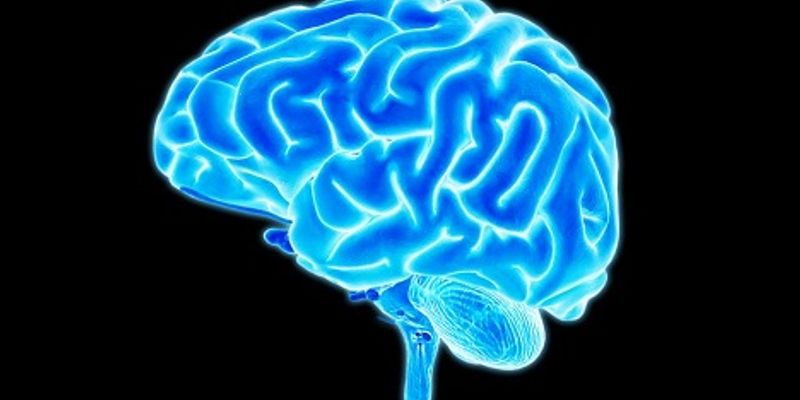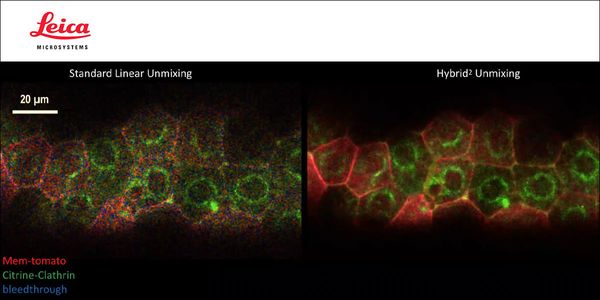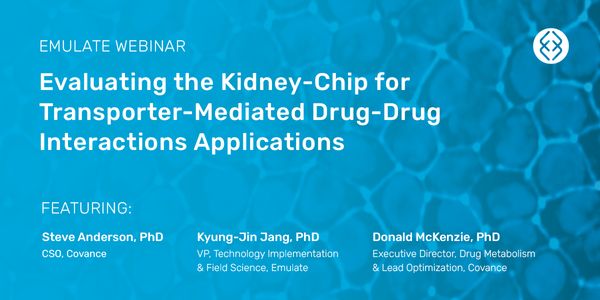Brain
The brain: is the organ located in the head and serves as the center of the nervous system in all vertebrate. The brain is the most complex organ in a vertebrate's body and is close to the sensory organs for senses such as vision.
-
APR 20, 2021 | 12:00 AMTraumatic brain injury (TBI) is best characterized as brain dysfunction caused by an outside force, usually a violent blow to the head, often occurring as a result of a severe sports injury...APR 20, 2021 | 12:00 AMC.E. CREDITSSomatic mutations that arise during development are increasingly recognized as contributors to neurodevelopmental disease. One challenge has been to determine how mosaic mutations contribute...MAR 24, 2021 | 12:00 AMOver the past few years there has been an increased interest in the role of cannabis for treating medical conditions. Attitude towards cannabis has evolved rapidly with the expanding legaliz...FEB 24, 2021 | 12:00 AMAs pharmaceutical companies have reduced or eliminated neuroscience drug development due to high costs and low approval rates, the economic and healthcare burden of CNS disorders in the Unit...DEC 16, 2020 | 8:00 AMDate: December 16, 2020 Time: 8:00am (PST), 11:00am (EST) Molecular imaging of living specimens offers a means to draw upon the growing body of high-throughput molecular data to better under...DEC 03, 2020 | 4:30 PMThis drug development program is designed to create a family of broad-spectrum, pan-coronaviral drugs that respectively inhibit multiple key enzymes required for viral replication. By target...NOV 20, 2020 | 9:30 AM...NOV 12, 2020 | 12:00 AMCases of traumatic brain injury (TBI) have been steadily rising over the past decade with most common causes of injury observed among participants in contact sports, combat military personne...Speaker: Paul R. Johnson, PhD, MT(ASCP), DABCC, FAACCNOV 05, 2020 | 9:00 AMMore than 50,700 Americans died of opioid overdose in 2019, and more than 1.6 million Americans live with addiction to opioids. Moreover, more than 50 million Americans suffer from chronic p...Speaker: Rebecca G. Baker, PhD , Linda L. Porter, PhD , Jack B. Stein, PhDPresented at: Opioid Crisis Virtual Event Series 2020
NOV 05, 2020 | 7:30 AMThe opioid crisis is a uniquely American challenge. Many factors catalyzed this national nightmare and others continue to fuel it. This presentation delves into some of the major contributor...Speaker: Professor Bertha Madras (the Honorable)Presented at: Opioid Crisis Virtual Event Series 2020
NOV 05, 2020 | 12:00 AMSubstance use disorder (SUD) remains a highly stigmatized medical condition in the US. One of the most effective methods of treatment for SUD, specifically for opioid use disorder and alcoho...NOV 05, 2020 | 12:00 AMThe opioid crisis erupted from a tragic convergence of factors from the private and public sectors. Changing sensibilities on opioid use and abuse, perspectives on addiction and recovery, be...NOV 05, 2020 | 12:00 AMLearning Objectives: 1. Discuss the disease state model of substance use disorder 2. Discuss the evidence surrounding common misconceptions regarding substance use disorder...NOV 05, 2020 | 12:00 AMUrine drug testing has become an essential part of the management of patients with chronic pain. Testing provides objective information regarding drug compliance, diversion, and abuse to med...NOV 05, 2020 | 12:00 AMAs one of the few evidence-based treatments shown to decrease mortality, buprenorphine use has grown in the United States and abroad. Buprenorphine is a first line option for opioid use diso...OCT 15, 2020 | 9:00 AMDate: October 15, 2020 Time: 9:00am (PDT), 12:00pm (EDT) Renal transporters play an important role in potential clinical drug-drug interactions (DDIs) as highlighted in the FDA, EMA and PMDA...SEP 30, 2020 | 1:30 PMRNA plays important and diverse roles in biology, but molecular tools to manipulate and measure RNA are limited. We demonstrate that RNA-targeting CRISPR effector Cas13 can be engineered for...Speaker: Omar Abudayyeh, PhD , Jonathan Gootenberg, PhDPresented at: CRISPR Virtual Event Series 2020
SEP 30, 2020 | 12:00 AMCas9 based therapeutics have the potential to revolutionize the treatment of genetic diseases. However, safe and effective methods for delivering Cas9 protein, gRNA and donor DNA need to be...SEP 23, 2020 | 1:30 PMExtracellular vesicles (EVs) are lipid bilayer-delimited pieces of cells that are released from the plasma membrane as "ectosomes" and from the endosomal system as "exosomes.&...SEP 23, 2020 | 11:00 AM...Speaker: Keynote: Rebecca Ihrie, PhDPresented at: 9th Annual Fluidigm Mass Cytometry Virtual Summit
SEP 17, 2020 | 12:00 PMNext-generation sequencing (NGS) is the primary technology used to identify genomic targets for vaccine development, detect emerging viral strains and monitor transmission patterns. Enhanced...SEP 17, 2020 | 12:00 AMAs the spread of infectious diseases, current pandemic, and growing antimicrobial resistance (AMR) continues globally, next-generation sequencing (NGS) became a tool to diagnose infectious d...SEP 10, 2020 | 12:00 AMSepsis is a life-threatening condition that is caused by the immune system’s inability to respond appropriately to an infection. How sepsis can change the gut microbiome in ways that a...SEP 09, 2020 | 12:00 AMProkaryotic DNA contains three types of methylation: N6-methyladenine, N4-methylcytosine and 5-methylcytosine. The lack of tools to analyse the frequency and distribution of methylated resid...
APR 20, 2021 | 12:00 AM
Traumatic brain injury (TBI) is best characterized as brain dysfunction caused by an outside force, usually a violent blow to the head, often occurring as a result of a severe sports injury...
APR 20, 2021 | 12:00 AM
C.E. CREDITS
Somatic mutations that arise during development are increasingly recognized as contributors to neurodevelopmental disease. One challenge has been to determine how mosaic mutations contribute...
MAR 24, 2021 | 12:00 AM
Over the past few years there has been an increased interest in the role of cannabis for treating medical conditions. Attitude towards cannabis has evolved rapidly with the expanding legaliz...
FEB 24, 2021 | 12:00 AM
As pharmaceutical companies have reduced or eliminated neuroscience drug development due to high costs and low approval rates, the economic and healthcare burden of CNS disorders in the Unit...
DEC 16, 2020 | 8:00 AM
Date: December 16, 2020 Time: 8:00am (PST), 11:00am (EST) Molecular imaging of living specimens offers a means to draw upon the growing body of high-throughput molecular data to better under...
DEC 03, 2020 | 4:30 PM
This drug development program is designed to create a family of broad-spectrum, pan-coronaviral drugs that respectively inhibit multiple key enzymes required for viral replication. By target...
NOV 20, 2020 | 9:30 AM
...
NOV 12, 2020 | 12:00 AM
Cases of traumatic brain injury (TBI) have been steadily rising over the past decade with most common causes of injury observed among participants in contact sports, combat military personne...
Speaker:
Paul R. Johnson, PhD, MT(ASCP), DABCC, FAACC
NOV 05, 2020 | 9:00 AM
More than 50,700 Americans died of opioid overdose in 2019, and more than 1.6 million Americans live with addiction to opioids. Moreover, more than 50 million Americans suffer from chronic p...
Speaker:
Rebecca G. Baker, PhD
, Linda L. Porter, PhD
, Jack B. Stein, PhD
Presented at: Opioid Crisis Virtual Event Series 2020
NOV 05, 2020 | 7:30 AM
The opioid crisis is a uniquely American challenge. Many factors catalyzed this national nightmare and others continue to fuel it. This presentation delves into some of the major contributor...
Speaker:
Professor Bertha Madras (the Honorable)
Presented at: Opioid Crisis Virtual Event Series 2020
NOV 05, 2020 | 12:00 AM
Substance use disorder (SUD) remains a highly stigmatized medical condition in the US. One of the most effective methods of treatment for SUD, specifically for opioid use disorder and alcoho...
NOV 05, 2020 | 12:00 AM
The opioid crisis erupted from a tragic convergence of factors from the private and public sectors. Changing sensibilities on opioid use and abuse, perspectives on addiction and recovery, be...
NOV 05, 2020 | 12:00 AM
Learning Objectives: 1. Discuss the disease state model of substance use disorder 2. Discuss the evidence surrounding common misconceptions regarding substance use disorder...
NOV 05, 2020 | 12:00 AM
Urine drug testing has become an essential part of the management of patients with chronic pain. Testing provides objective information regarding drug compliance, diversion, and abuse to med...
NOV 05, 2020 | 12:00 AM
As one of the few evidence-based treatments shown to decrease mortality, buprenorphine use has grown in the United States and abroad. Buprenorphine is a first line option for opioid use diso...
OCT 15, 2020 | 9:00 AM
Date: October 15, 2020 Time: 9:00am (PDT), 12:00pm (EDT) Renal transporters play an important role in potential clinical drug-drug interactions (DDIs) as highlighted in the FDA, EMA and PMDA...
SEP 30, 2020 | 1:30 PM
RNA plays important and diverse roles in biology, but molecular tools to manipulate and measure RNA are limited. We demonstrate that RNA-targeting CRISPR effector Cas13 can be engineered for...
Speaker:
Omar Abudayyeh, PhD
, Jonathan Gootenberg, PhD
Presented at: CRISPR Virtual Event Series 2020
SEP 30, 2020 | 12:00 AM
Cas9 based therapeutics have the potential to revolutionize the treatment of genetic diseases. However, safe and effective methods for delivering Cas9 protein, gRNA and donor DNA need to be...
SEP 23, 2020 | 1:30 PM
Extracellular vesicles (EVs) are lipid bilayer-delimited pieces of cells that are released from the plasma membrane as "ectosomes" and from the endosomal system as "exosomes.&...
SEP 23, 2020 | 11:00 AM
...
Speaker:
Keynote: Rebecca Ihrie, PhD
Presented at: 9th Annual Fluidigm Mass Cytometry Virtual Summit
SEP 17, 2020 | 12:00 PM
Next-generation sequencing (NGS) is the primary technology used to identify genomic targets for vaccine development, detect emerging viral strains and monitor transmission patterns. Enhanced...
SEP 17, 2020 | 12:00 AM
As the spread of infectious diseases, current pandemic, and growing antimicrobial resistance (AMR) continues globally, next-generation sequencing (NGS) became a tool to diagnose infectious d...
SEP 10, 2020 | 12:00 AM
Sepsis is a life-threatening condition that is caused by the immune system’s inability to respond appropriately to an infection. How sepsis can change the gut microbiome in ways that a...
SEP 09, 2020 | 12:00 AM
Prokaryotic DNA contains three types of methylation: N6-methyladenine, N4-methylcytosine and 5-methylcytosine. The lack of tools to analyse the frequency and distribution of methylated resid...
























